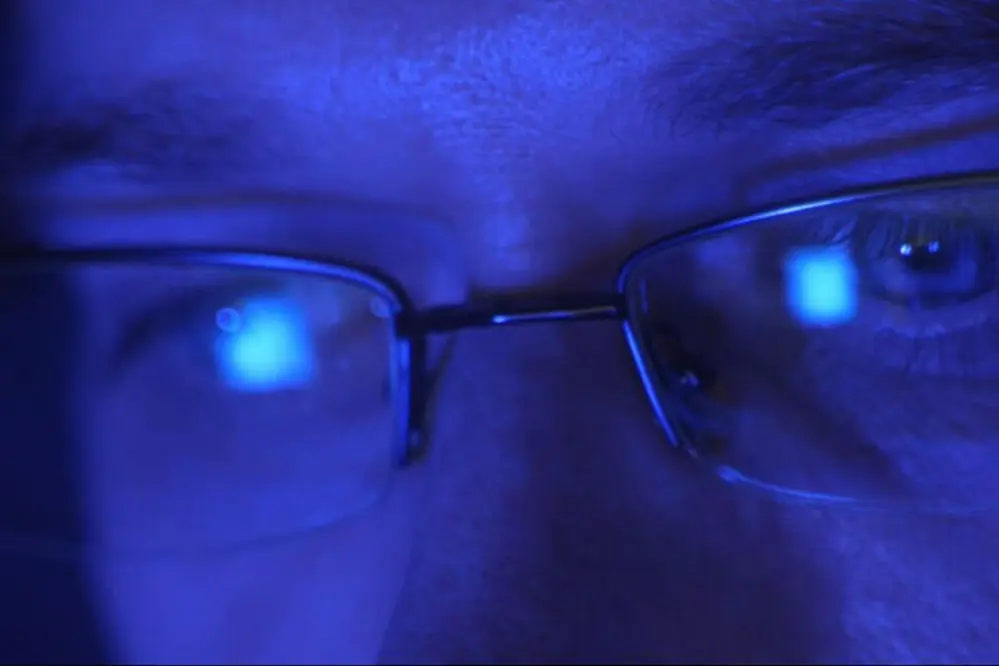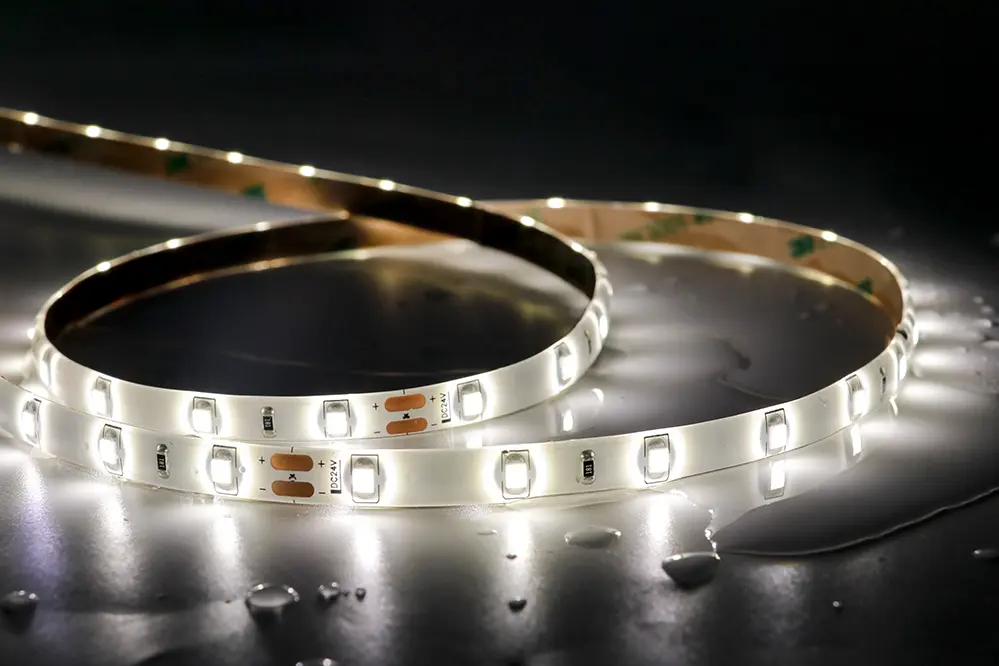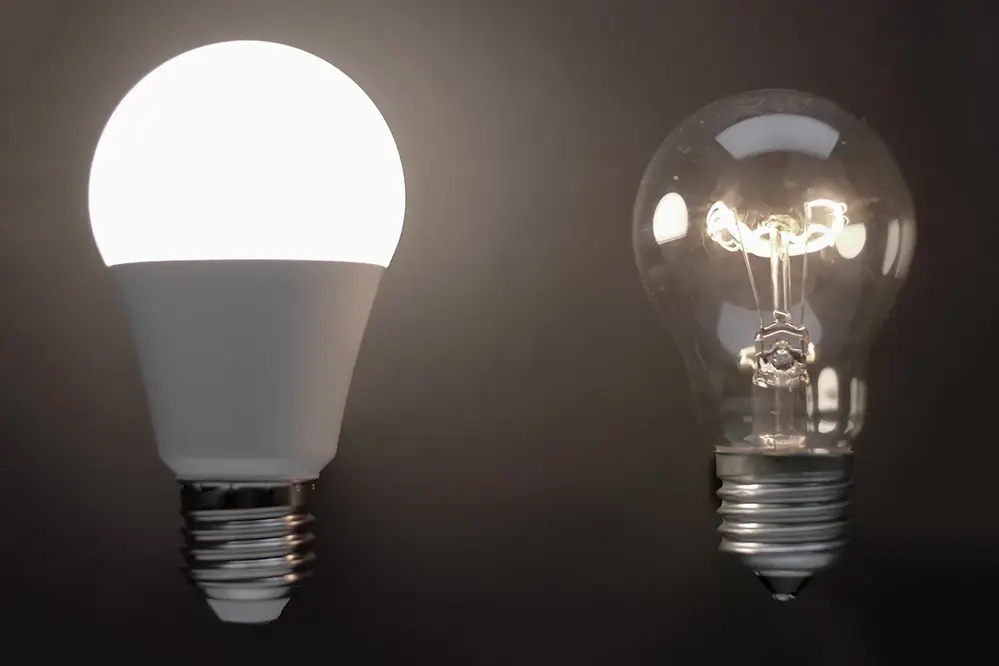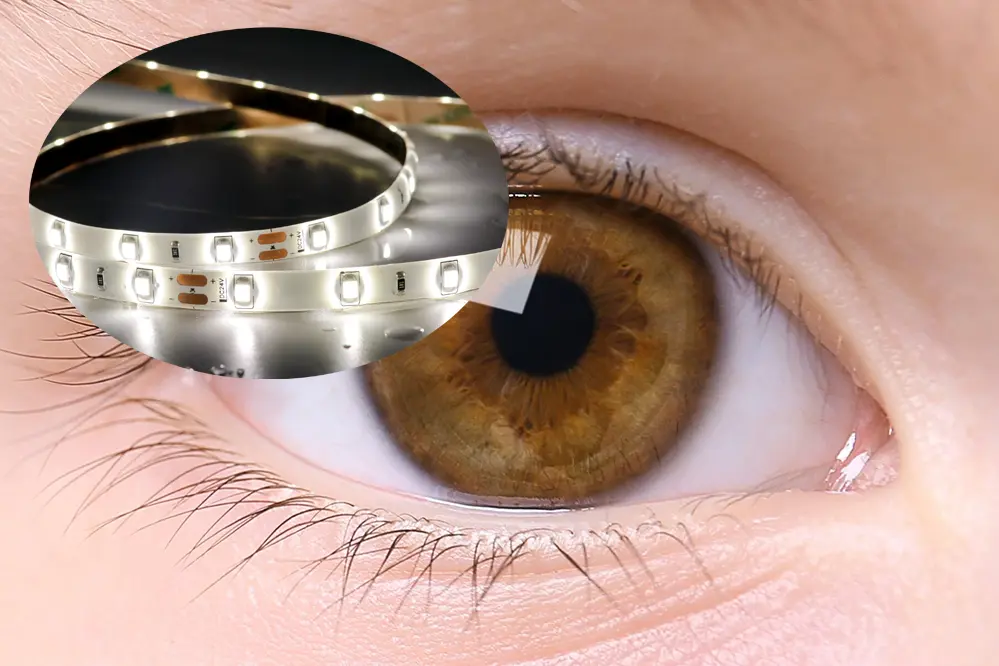Welcome to our blog post on the topic “Are LED Strip Lights Bad for Your Eyes?” If you’ve been wondering about the potential impact of LED strip lights on your eye health, you’ve come to the right place. As experts in the field of lighting, we have the answers you’re looking for.
LED strip lights are generally considered safe for your eyes when used properly. However, prolonged exposure to bright LED lights, especially those with high blue light content, can cause eye strain and discomfort. It’s important to take precautions and protect your eyes by ensuring proper lighting conditions to minimize any potential negative effects.
In this blog post, we will delve deeper into the topic of LED strip lights and their impact on eye health. We will explore the science behind LED lighting, discuss the potential risks, and provide practical tips on how to use LED strip lights safely. So, if you’re curious to uncover the truth about LED strip lights and their effects on your eyes, keep reading.
Understanding LED Light Exposure

Excessive exposure to LED illumination can strain the human visual system, raising concerns about potential eye discomfort. The intensity and duration of exposure play crucial roles in determining any adverse effects on one’s vision.
It is essential to comprehend how the spectral distribution of LEDs compares to natural light. While LEDs offer energy efficiency, their emission can sometimes include peaks in the blue part of the spectrum, which may contribute to discomfort and potential retinal stress.
Thus, “blue light hazard” and “photobiological safety” are terms increasingly scrutinized as we seek to maintain a balance between the benefits of LED technology and our ocular health.
LED Technology Explained
LED, short for Light Emitting Diode, leverages semiconductors to emit light efficiently when an electrical current passes through.
It represents the pinnacle of lighting technology, offering unparalleled longevity and energy conservation compared to traditional incandescent bulbs.
LEDs have revolutionized illumination by combining low energy consumption with high luminous efficacy.
Unlike incandescents, LEDs provide directional light, enabling precise control over light distribution. This attribute, coupled with their minimal heat emission, makes them highly suitable for various applications. Notably, their capacity to emit a specific light spectrum can be both an advantage and a concern in terms of ocular health.
Eye Interaction with LED Light
The human eye perceives light through photoreceptor cells, namely rods and cones, which translate light waves into visual signals. LEDs emit a high concentration of blue light, which, in excess, can lead to discomfort known as “blue light hazard.”
When exposed to intense light sources, like LEDs, the retina can incur photochemical damage, especially with long-term exposure. Some studies suggest that prolonged exposure to blue-rich LED light could exacerbate the risk of macular degeneration.
Concerningly, the blue light from LEDs peaks at a shorter wavelength than natural sunlight, exposing the eye to a disproportionate amount of energy within a narrow band. The potential for retinal stress heightens with high intensity and close proximity of LED strip lights.
Moreover, the flickering phenomenon inherent in some LED lighting systems can trigger photosensitive reactions, which can be harmful particularly in individuals with certain neurological disorders. The modulation of LED brightness through Pulse Width Modulation (PWM) can result in flicker that is imperceptible to the naked eye but may nonetheless induce visual fatigue and discomfort.
Therefore, while LED strip lights present a myriad of design possibilities, they should be employed thoughtfully. Ensuring appropriate diffusers are in place and moderating exposure can help mitigate potential ocular harm associated with LED lighting.
LED Strips and Visual Health

When assessing the effects of LED strip lighting on ocular well-being, one cannot overlook the integral role of installation approach and usage patterns. Intense illumination without proper diffusion can lead to discomfort and glare, which over time, may contribute to eye strain and fatigue. It is thus imperative that LED strip lights are installed in a manner that avoids direct exposure to the eyes, especially in settings where individuals may spend extended periods of time.
In the evaluation of potential risks to visual health, it becomes essential to consider both the spectral content and the operational characteristics of LED strips. Lights that emit a high proportion of blue light are often viewed with caution due to their association with sleep disruption and potential retinal damage. To circumvent these issues, choosing LED strips with adjustable color temperature settings can provide a more eye-friendly environment, allowing for a reduction in blue light exposure during evening hours when the potential for disruption to circadian rhythms is greatest.
Potential Risks to Eyesight
LED strip lights can pose potential ocular hazards.
The blue light emitted by LEDs is a primary concern. It is well-documented that blue light can interfere with the natural sleep-wake cycle, known as the circadian rhythm. This light can also contribute to digital eye strain when viewing LED-lit screens, raising questions about similar effects from prolonged exposure to LED strip lighting. Additionally, the intensity of this light has been studied for its potential effects on retinal cells, suggesting that overexposure may contribute to retinal stress and photoreceptor damage.
High-intensity LEDs might cause glare and discomfort.
Constant exposure to flickering lights can be a subtle culprit. While not visible to the naked eye, the pulsing of LED lights at a frequency imperceptible to humans may still have biological effects, potentially causing eyestrain, headaches, or even photosensitive reactions in susceptible individuals.
Many factors can mitigate these risks. Utilizing diffusers to soften light output, selecting LEDs with lower blue light intensity, and ensuring appropriate installation to avoid direct eye exposure are effective strategies. As of the current lighting industry standards 2023, manufacturers have been increasingly addressing these concerns by offering LED systems that include features designed to reduce the risk of eye discomfort and safeguard visual health.
Comparing LEDs with Other Light Sources

LEDs provide distinct advantages over other lighting options.
When compared to traditional incandescent or halogen bulbs, LED strip lights offer a more energy-efficient solution with a vastly longer lifespan. This reduces both the need for frequent replacements and the environmental burden. Moreover, the ability to produce a wide spectrum of colors enables a dynamic and customizable lighting experience. However, evaluating the photobiological safety of LEDs must consider individual spectral power distribution.
Incandescent bulbs emit a continuous light spectrum.
Unlike some LED lighting that can emit a narrow spectral range with high-intensity blue light, incandescent bulbs provide a continuous spectrum that mimics natural sunlight. This can lead to a less disruptive impact on circadian rhythms compared to the blue-rich light emitted by some LEDs, which has been associated with sleep disturbances.
LEDs can be designed to minimize negative effects.
With advancements in technology, LED producers are able to engineer products capable of emitting full-spectrum light, resembling natural sunlight. This innovation helps mitigate some of the concerns regarding the potential for eye damage and circadian rhythm disruption traditionally associated with narrow-spectrum LEDs.
Balancing benefits and concerns is essential.
In terms of personalized settings and energy savings, LED strip lights offer impressive capabilities, yet vigilance regarding photobiological safety is crucial. As the illumination landscape continues to evolve, keeping abreast of the latest standards and research on LED safety will become increasingly vital for protecting ocular health.
Safe Usage of LED Lighting

To ensure eye comfort, utilize LED strip lights with an appropriate Color Rendering Index (CRI) and avoid direct gazing into the diodes.
When installing LED strip lights, attention to brightness levels and color temperatures is key—inadequate or excessive illumination can lead to potential discomfort and eye strain, particularly in task-centric or residential spaces.
Additionally, diffusers can be used to soften the emitted light, substantially reducing the risk of glare and minimizing potential harm to the eyes.
Optimal Installation for Eye Comfort
Proper alignment and placement of LED strip lights are paramount for preventing glare and eye strain. Avoid placing them directly in the line of sight where they can cause discomfort or distraction. The indirect lighting technique, where the LED strips are hidden and the light is reflected off surfaces, is one approach that enhances visual comfort while maintaining functionality.
To prevent eye fatigue, install LED strip lights with dimming capabilities to adjust brightness as needed. This flexibility allows one to fine-tune the lighting based on the time of day, task at hand, or personal preference, thereby minimizing the potential for overstimulation of the eyes. Lighting controls should be easily accessible and user-friendly to encourage regular adjustments based on specific requirements.
Color temperature selection is also critical; opting for warmer tones (around 2700K to 3000K) during relaxation and cooler tones (above 5000K) in productivity settings can emulate natural lighting patterns and aid in maintaining circadian rhythms. Such strategic choices can mitigate the impact of blue light exposure, which is often a concern with LED lighting.
In environments where precise tasks are performed, ensure that LED strip lights are installed to provide even illumination. This uniformity prevents shadows and reduces the need for the eyes to constantly adjust, thus diminishing eye fatigue. Task lighting should complement ambient light without creating excessive brightness, which can lead to squinting and subsequent eye strain.
Finally, investing in LED strip lights with a high CRI ensures that colors appear true to life and reduces the strain associated with identifying and differentiating colors. A higher CRI rating translates to a quality of light that’s more comfortable for the eyes, ultimately contributing to a visually healthier environment.
Best Practices in LED Light Intensity
When integrating LED strip lights into a space, it’s crucial to balance brightness level with the functional need of the area, avoiding overwhelming illumination which can cause discomfort and negatively impact ocular health.
Brightness should be adjustable, allowing users to fine-tune light levels to suit various activities and times of the day, with the versatile option of soft or bright led lights.
Moreover, inclusion of dimmer switches or smart light controls for led lights (compatible with home automation systems or mobile applications) empowers users to customize their lighting experiences precisely.
Ambient light sensors that auto-adjust light levels in response to natural daylight can prevent glare and reduce the intensity when not essential, contributing to eye comfort and energy efficiency.
There should also be an emphasis on indirect lighting techniques which distribute light more evenly, minimizing harsh contrasts and shadows that can induce eye strain for both occupants and visitors within the space.
Additionally, employing diffusers on LED strip lights softens the emitted light, contributing to a more pleasant visual atmosphere and reducing the risk of discomfort or eye strain.
Navigating LED Strip Varieties

When selecting LED strip lights, one must prioritize types that ensure eye safety. Opt for strips with an appropriate Color Rendering Index (CRI), ensuring colors appear natural, and eyes are not strained by inaccurate hues. Additionally, look for LEDs with a low blue light emission as excessive exposure can be detrimental to ocular health over time.
It is paramount to consider the LED density and luminous efficacy. High-density LED strips provide a smoother, more consistent light output with minimal spotting, which can be critical in settings where visual clarity is paramount.
Identifying Quality LED Products
Look for certifications from recognized bodies.
When purchasing LED strip lights, one should seek out products bearing standards and certifications from reputable organizations, such as Energy Star or UL (Underwriters Laboratories), which signal compliance with safety and performance criteria. Additionally, products with a warranty offer a level of assurance regarding their longevity and quality. Manufacturers often provide such warranties as a testament to the durability of their offerings.
Regarding flicker, prioritize non-flickering options.
Flicker in LED lights can cause eye strain and headaches. Select LED strip lights with a low flicker index and consider those with flicker-free technology to mitigate the potential for discomfort. Some products are designed to provide a constant light output, limiting the pulsing effect that can be strenuous over prolonged periods.
Assess lumen output and color temperature.
It is also important to consider the lumen output and color temperature. Adequate lumen output ensures sufficient brightness without over-illumination, which can be harsh on the eyes. Meanwhile, an appropriate color temperature fosters an ambiance conducive to the intended application – be it warm lighting for relaxation or cool lighting for concentration.
Ensure the LED strips have smooth dimming capabilities.
Finally, pay attention to the dimming capabilities of LED strip lights. Quality products should allow for smooth transitions when adjusting brightness, avoiding abrupt changes that can be jarring to the eyes. Dimmable LED strips cater to varying lighting needs, enabling customization that can enhance visual comfort and reduce potential eye strain.
The Importance of Certification Marks
Certification marks on LED strip lights are not just mere labels; they carry substantial implications for eye safety and product reliability.
- Safety Standards Compliance: Certifications indicate adherence to safety benchmarks, suggesting a reduced risk of eye hazards.
- Quality Assurance: They act as a proxy for quality, which can relate to light flickering or glare control that affects eye comfort.
- Regulatory Approval: Obtaining a certification mark usually implies that the product has been tested and approved by authoritative bodies.
Products with certification marks like UL, CE, or RoHS generally meet strict guidelines to assure minimal harm to the eyes.
The absence of certification marks should raise red flags about the potential risks of using such products, particularly in relation to eye health.
Conclusion
The discourse surrounding LED strip lights and ocular health is nuanced, requiring consideration of light quality and usage patterns. Prolonged exposure to poorly designed lighting can have detrimental effects, emphasizing the importance of safety guidelines and quality certifications. Recent technology advancements offer features like adjustable color temperatures and dimming capabilities to mitigate risks. By following installation and usage recommendations, LED strip lights can create comfortable visual environments. It’s not the lights themselves, but their proper application and selection of quality products that ensure positive contributions to ocular well-being.
In conclusion, when it comes to the impact of LED strip lights on your eyes, knowledge and proper implementation are key. By understanding the potential risks, adhering to safety guidelines, and selecting high-quality products, you can create a visually comfortable environment. If you’re in search of reliable LED strip lights and LED neon strips, we recommend reaching out to Unitop, a professional Chinese manufacturer known for their expertise and commitment to producing top-notch lighting solutions. Contact Unitop today to explore their wide range of products and ensure your lighting needs are met with excellence.





